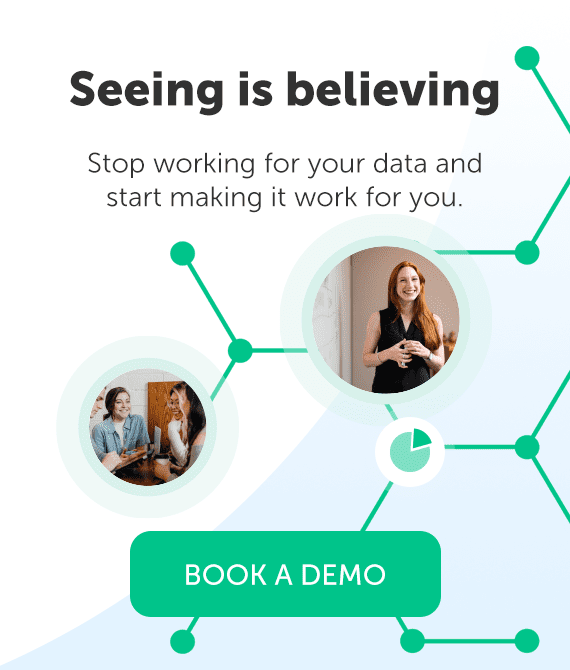The legal industry is evolving to become more data-driven, with law firms increasingly adopting the strategies used by management consulting and Big Four firms. These firms have long understood the power of harnessing the breadth, depth, and risks within their networks—and now, legal professionals are beginning to embrace similar practices, often through the use of technology that may expand traditional legal tech software.
Recently, our North American Legal Vertical Leads, Joe Przybyla and Stacey Morrow sat down with Jennifer Klyse of Klyse Advisory Group LLC, to discuss how combining insights from Experience Management (EM) systems with relationship intelligence can significantly impact business development efforts. Below, they highlight how this dual approach is empowering firms to respond more strategically and effectively to client needs.
The two pillars of business development
Gone are the days when cloud applications like Experience Management, CRM, legal tech software, and ERMs were met with skepticism. Today, many are embracing cloud-based solutions that support advanced analytics, data visualization, and smarter decision-making. Unifying data across an organization is essential to unlocking business growth. But achieving that growth goes beyond just implementing new technology—it requires the integration of both your experience and your relationships.
By combining these two pillars, teams can respond more strategically and effectively to client needs. Whether you’re competing in an RFP process, assembling the right team for a client pitch, or uncovering untapped opportunities, it’s essential to understand not just what your firm is capable of, but also the intricate web of relationships that can make or break a deal. This holistic view of both your expertise and connections provides a stronger, more comprehensive approach to business development.
When it comes to business growth, there are two foundational pillars to focus on:
1. Understanding your experience (Experience Management)
2. Understanding your relationships (Relationship Intelligence)
While these two elements are often treated separately, they’re deeply interconnected. It’s not enough to just know the “what”—your firm’s track record and expertise—you also need to understand the “who”—the relationships that can drive business forward. And while it’s often challenging to combine these two pillars when working on something tactical, like putting together a pitch or a bid, those who succeed in uniting data from both sides gain a strategic advantage.
For example, imagine entering a pitch equipped not only with your firm’s expertise, but also with the ability to leverage an existing relationship—whether through a colleague’s past work experience or a shared alumni connection with a key decision-maker at the prospective client. By understanding who-knows-who within the firm’s wider network and tapping into those personal connections, your team can make a warm introduction that builds trust early on. This familiarity can open doors to deeper conversations, provide insider knowledge on the client’s needs, and ensure an edge over competitors who may only have technical expertise to offer. In a competitive bidding situation, this relational advantage could be the difference between landing the deal or losing out to a rival firm.
Bringing the two pillars together
In practice, the ability to integrate these pillars can be a challenge. In many law firms, especially those in the AmLaw 200, knowledge management can be siloed, with individual attorneys holding onto their own insights and networks. This fragmented approach leaves you with an incomplete view of your firm’s overall potential.
Even though financial management systems within law firms are often well-established, using experience and relationship data strategically for business development still lags behind. The firm may have vast pools of untapped information but lack the legal tech software needed to take full advantage of that data.
This gap becomes even more detrimental during major changes like M&A or lateral partner moves. Whether acquiring new capabilities or expanding your client portfolios, the ability to understand both the experience and relationships involved is key to maximizing the value of those investments. Ensuring these pillars are integrated will allow you to navigate big transitions while also growing client relationships and capitalizing on new opportunities.
Lessons from the Big Four
Big Four consulting firms have long understood the importance of relationships—their depth, breadth, and underlying risks, such as attrition or succession planning. They’ve successfully merged relationship and experience data into cohesive strategies, something you should aspire to emulate in your own practice.
At present, many law firms take a fragmented approach, relying on separate legal tech software or processes that only partially integrate this information. Often, these systems lack the full data coverage needed or provide limited ability to visualize relationships, an essential element in client development and key account management.
For example, consider PwC’s partnership with Introhive—the largest client intelligence deployment globally. PwC uses Introhive to maximize their use of Salesforce, ensuring that information about their vast professional network is accessible in real time by employees across the world. PwC also introduced Introhive’s Cleanse solution for ongoing data accuracy and provides employees with insights tailored to their needs. ntrohive’s pre-meeting digests and customization options ensure that PwC employees can easily access and use relationship intelligence. This personalized approach helps the firm drive business growth by making relationship data more actionable on an individual level.
It’s this level of strategic data unification to aim for in your own firm. By applying these lessons from the Big Four, you can develop a more integrated approach that bolsters business development efforts. Remember, it’s not about the specific system; whether you’re using Foundation, another EMS or legal tech software solution, or a custom data lake, it’s all about how you analyze and utilize those relationships and experience to drive growth. However, data quality and coverage are non-negotiable; when either falls short, engagement drops and so does the impact of your insights.
The business impact of combining experience and relationship data with legal tech software
The key to unlocking business growth lies in integrating experience data with advanced relationship intelligence and analytics. Some of the most forward-looking and innovative firms are already doing this—making strategic decisions based on the insights they gain from fully integrated data systems. Here’s how this approach can directly impact your business:
Building winning teams for effective RFP responses
When pitching to potential clients, knowing the depth and breadth of relationships across your firm is invaluable. Relationship intelligence uncovers “who-knows-who,” identifying those with the strongest ties and industry experience. By understanding which team members have worked with a client or have warm, positive connections (i.e. the ‘warm and fuzzies’), you can assemble project teams that resonate. Inviting people with these connections to the bid team can provide valuable insights and inside tips not covered in the bid documentation, providing the advantage. This strategic alignment of relationships and expertise is often the deciding factor in the initial bid or the shortlist presentation.
Data-driven business development strategies
Combining your experience management systems with relationship intelligence can open up new growth opportunities within both existing client relationships and unexplored markets. For example, by integrating corporate demographic data with your go-to-market strategy, you can conduct more precise white-space analysis to identify where your firm’s capabilities align with emerging client needs. This realignment can help target new markets or grow client relationships in a more focused, strategic way.
Conclusion
The path to unlocking sustainable business growth in the legal industry lies in your ability to combine both experience and relationship intelligence found in legal tech software. By aligning these two elements, your team can make smarter, data-driven decisions that cater directly to client needs, which, in turn, strengthens your competitive edge.
The evolution of the legal space is already underway. Will your firm adopt the strategic intelligence seen in the Big Four, or risk being left behind by more adaptive competitors?
Learn more about driving business growth through strategic law firm data management, structure, and client lifecycle strategies by connecting with Jennifer Klyse on LinkedIn.
For more on utilizing relationship intelligence and legal tech, explore our recent Legal Guide or book a demo with our team.





